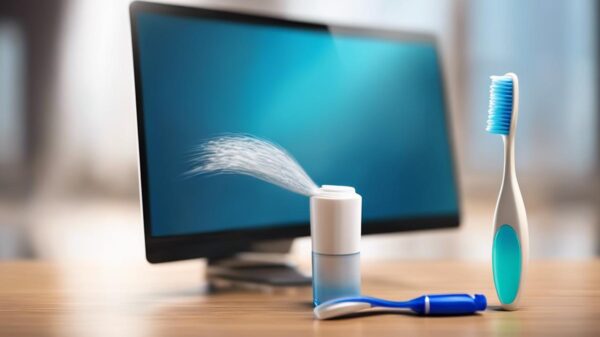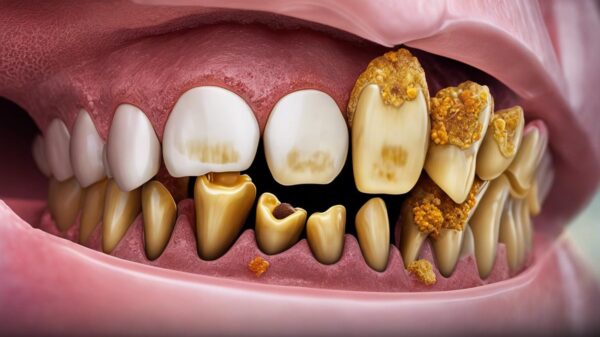Why Floss Gets Stuck Between Teeth
Dental hygiene is one of the essential parts when taking care of your body’s health. It is vital to make sure you care for your dental health when taking care of your health overall. By having regular scheduled dental appointments, brushing your teeth twice a day, and keeping educated on best practices for dental hygiene, you can maintain proper oral health. When taking care of your mouth, flossing is crucial. However, flossing can sometimes be a challenge. Floss becoming stuck is not everyone’s issue, but it’s not uncommon. So, what do you do when your floss gets stuck?
So, why does my floss get stuck? There are many reasons why floss can get stuck between your teeth. The leading cause of your floss getting stuck has to do with the buildup between your teeth. Other reasons include a broken or chipped tooth, your teeth are too crowded together, or ill-fitted or rough dental restorations.
When your dental restoration is not correctly put in place, it can leave rough edges for floss to become stuck or shredded. Naturally, you want your dental restoration to be smooth enough to allow for proper flossing without becoming caught. If your floss keeps becoming stuck after a recent dental procedure, you may want to return to your dentist to have it repaired further.
How to Know When Your Floss is Stuck
Sometimes when floss becomes stuck, you may notice that some regions of your gums bleed while others don’t. This can be a sign that your floss is getting stuck between your teeth. Sometimes your floss can seem like it’s being cut or shredded in certain parts of your mouth. This can also be a sign that your floss is becoming stuck. Stuck floss will often become shredded, broken, or snagged.
Floss Stuck Due to Buildup
When residue and food build up around your gums and teeth, it’s called plaque. A constant buildup of plaque can harden and turn into tartar. Tartar can create jagged edges for your teeth and cause your floss to shred or become stuck when flossing. Thankfully, tartar can be removed with regular dental cleanings.
Floss Stuck Due to Broken or Chipped Teeth
When flossing, if you notice that only one area between your teeth is hard to floss or keeps shredding your floss, you may have a broken or chipped tooth. This can be a result of tooth decay or another hidden issue. Often, some people grind their teeth, especially at night, which can lead to chipped or broken teeth. To combat this, you can wear a mouthguard at night to prevent further damage to your teeth.
Floss Stuck Due to Crowded Teeth
If your floss keeps becoming stuck due to your teeth being crowded, it can often indicate other underlying dental issues. These include a crossbite or crooked teeth. You can resolve these issues with braces or retainers that help realign your teeth.
What To Do When Your Floss is Stuck
It’s essential that you don’t try to force the floss thread out. If it causes your gums pain or to become tender, you should exercise caution when trying to get your floss unstuck. Let go of one side of the floss so you can slide it through your teeth. If this method does not work, then try gently moving the floss thread down and out across your tooth, like a gentle sawing motion. If you are too forceful when removing the floss, you can damage your gums, resulting in bleeding, swelling, or irritation.
You can also try a different floss to see if it makes a difference in your floss becoming stuck. Some flosses are made to glide more easily between your teeth. Look for floss that definitively tells you that it’s made to allow you a more comfortable flossing experience. There are many flosses that you can try instead of your current floss. Some will break more easily when it becomes stuck, so you don’t have to worry about not being able to slide between your teeth. Sometimes thinner or waxed floss can aid in your flossing.
Long Term Solutions For Floss Getting Stuck
These solutions provided so far are only short term solutions. They may work for some time, but they should not be the only thing you do to treat your floss getting stuck. You should also take preventive measures which result in a long term solution.
If you experience a flawed dental restoration, you should seek a dentist’s help in replacing it. By talking with your dentist and completing an examination, your dentist should be able to diagnose the issues and provide a remedy. In some cases, the restoration should be replaced. In others, the repair may just need to be smoothed out.
If you have buildup around your teeth and gums or tooth decay, it’s best to have annual dental appointments to treat these issues. A dentist usually removes any tartar buildup when you go to your regularly scheduled dental appointments. They can also treat tooth decay by restoring the area. An example includes filling a cavity.
Don’t Avoid Flossing
Because floss can sometimes become stuck, it’s easy to want to avoid it entirely. However, you should not avoid it! By avoiding flossing, you allow plaque to build up and turn to tartar. This creates more issues when you try to floss, and thus, a cycle that ultimately ends with you not maintaining proper oral hygiene. By maintaining good dental health, you have the best opportunity to prevent your floss from becoming stuck.
People often have the misconception that flossing leads to bleeding gums. By avoiding flossing, your gums are more likely to bleed when you pick up flossing again. Bleeding gums and tenderness are signs of gum inflammation, which directly results from not flossing regularly or effectively. Again, another cycle begins when you don’t floss to avoid bleeding gums.
When you floss regularly, you have less gum irritation. However, if you haven’t routinely flossed or effectively enough, your flossing should be gentle when you start to floss again correctly. Be careful of tender areas that often bleed. By thoroughly cleaning between your teeth, your gums will begin to heal. If you don’t notice an improvement after a while, you should consult with your dentist. In severe cases, you may need to be treated for gum disease.
Floss Getting Stuck Due to Tartar
Tartar comes from the buildup of plaque that has hardened. The bacteria in your mouth builds up and coats your teeth, under your gum line, and between fillings and other dental fixtures. Plaque contains harmful bacteria that affect your tooth enamel and can cause tooth decay, such as cavities. However, if you remove plaque regularly, you can prevent permanent tooth damage and gum disease.
Tartar, also called calculus, can form above and below your gum line. It is naturally porous and rough. Because it develops around the gum line, it can lead to receding gums and gum diseases. Tartar can also prevent you from being able to take care of your gums properly. It can make it harder to floss and brush your teeth. This can lead to further tooth decay and other dental issues.
A common gum disease is gingivitis. This gum disease can be a direct result of tartar buildup. Usually, gingivitis can be stopped and even reversed if you floss, brush, and use an antiseptic mouthwash on top of your regular dental appointments.
If gingivitis is not treated correctly, it can lead to periodontitis. This gum disease forms when pockets develop between your gums and teeth, providing a space for the bacteria to infect the surrounding areas. Gum diseases can also be connected to other health issues.
How to Avoid Tartar Buildup
Being proactive in your oral hygiene can help to prevent dental issues before they form. So the best way to avoid tartar buildup is to have a proper dental hygiene routine. Brushing twice a day, flossing, and annual cleanings all help to prevent tartar from building up. 
When you brush, you will want to do so for about two minutes each time. Make sure you use a toothbrush that fits inside your mouth well and can reach hard-to-reach places like behind your molars. In some studies, electronic powered toothbrushes have been proven to remove more buildup.
When selecting a toothpaste, choosing one with fluoride will help protect your teeth against the buildup of tartar. It can also aid in repairing some enamel damage and fights the bacteria in plaque. Make sure to always floss no matter how great of a brusher you are! Rinsing your mouth daily is also essential to your oral health. Rinsing with an antiseptic mouthwash can kill plaque-causing bacteria.
Keep in mind that your diet also affects your oral health. When you eat sugary or starchy foods, bacteria thrive on them. These bacteria release acid that is harmful to your teeth when exposed to these kinds of foods. By eating healthy and limiting the number of sugary or starchy foods, you can prevent dental issues. Drink plenty of water during meals and make sure to brush afterward.
Smoking can also cause long-term dental issues. Studies have proven that people who smoke cigarettes or use tobacco products are more likely to have tartar buildup. Once tartar has formed, it’s difficult to remove and often must be done by a dentist. That’s why it is crucial to visit your dentist every six months.
Seeing a Dentist About Floss Getting Stuck
If you have concerns about how often your floss becomes stuck or other dental issues, such as tooth decay or crowded teeth, you can talk to a local dentist. They can help provide excellent care for your teeth. It’s especially important to see a dentist if you haven’t seen them in over a year. Keeping regularly scheduled appointments for cleanings and checkups can help you maintain your oral health even more. Most dentists suggest having a dental cleaning every six months. Contact Modern Dental Hygiene for more information or to schedule a dentist appointment!












